Flowers have long captivated human hearts with their beauty, fragrance, and symbolic meanings. However, beyond the common blooms that adorn gardens and bouquets lies a world of extraordinary flowers, each possessing unique features and intriguing histories. This article delves into the top 10 most special flowers in the world, celebrating their uniqueness, ecological significance, and the awe they inspire.
Top 10 Most Special Flowers in the World
1. Rafflesia arnoldii: The Corpse Flower
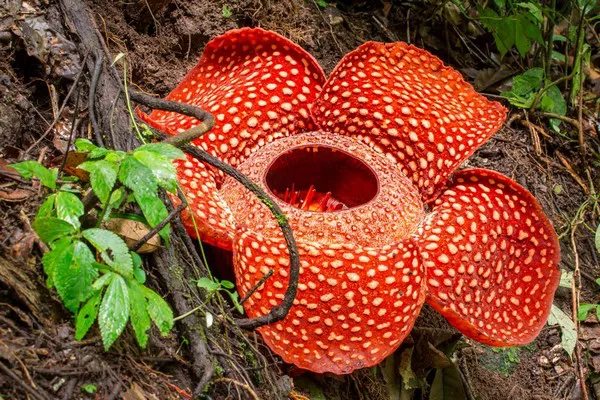
Scientific Name: Rafflesia arnoldii
Family: Rafflesiaceae
Habitat: Rainforests of Sumatra and Borneo
Flower Size: Up to 3 feet in diameter
Conservation Status: Endangered
Description: Rafflesia arnoldii is a parasitic plant with no stems, leaves, or roots. It relies entirely on its host, a vine of the genus Tetrastigma, for nutrients and water. The flower is composed of five fleshy, reddish-brown petals speckled with white spots. Its odor, reminiscent of decaying flesh, attracts carrion flies which pollinate the plant.
Ecological Role: By mimicking the scent of rotting meat, the corpse flower ensures pollination by carrion flies, which are its primary pollinators. This relationship is critical in the dense, competitive rainforest environment.
Conservation Efforts: The primary threats to Rafflesia arnoldii include habitat destruction and deforestation. Conservation strategies focus on habitat preservation, research, and public awareness campaigns to protect this unique species.
2. Amorphophallus titanum: The Titan Arum
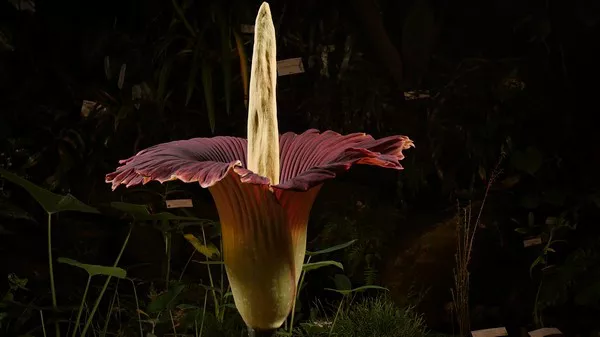
Scientific Name: Amorphophallus titanum
Family: Araceae
Habitat: Rainforests of Sumatra
Inflorescence Height: Up to 10 feet
Conservation Status: Vulnerable
Description: The titan arum produces the largest unbranched inflorescence in the world. Its bloom consists of a central spadix surrounded by a spathe. The inflorescence generates heat, helping to disperse its strong odor of rotting flesh, which attracts beetles and flies for pollination.
Ecological Role: The flower’s unique heating mechanism enhances the dispersion of its scent, effectively attracting pollinators from considerable distances. This adaptation is crucial for reproduction in its native habitat.
Conservation Efforts: Habitat loss and degradation pose significant threats to the titan arum. Conservation initiatives include protecting its natural habitat, cultivating plants in botanical gardens, and conducting research on its ecological needs.
See Also: Unveiling the Largest Carnivorous Flower – Titan Arum!
3. Welwitschia mirabilis: The Living Fossil
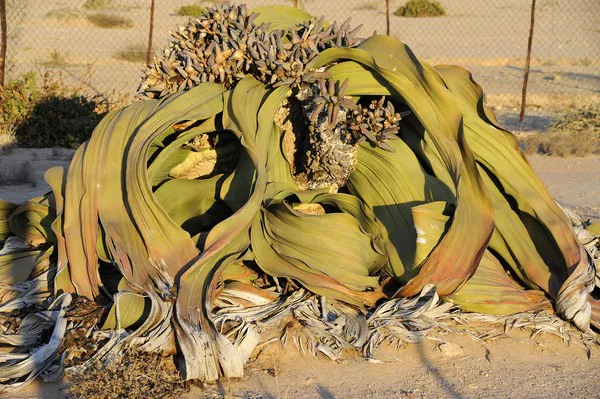
Scientific Name: Welwitschia mirabilis
Family: Welwitschiaceae
Habitat: Namib Desert, Namibia and Angola
Lifespan: Over 1,000 years
Conservation Status: Near Threatened
Description: Welwitschia mirabilis is a gymnosperm that produces only two leaves throughout its life. These leaves continuously grow from the base, becoming tattered and twisted due to the harsh desert conditions. The plant has a stout, woody stem and can survive extreme aridity by capturing moisture from fog.
Ecological Role: As a long-lived species, Welwitschia provides stability to its ecosystem, supporting various desert organisms that depend on its moisture and shelter.
Conservation Efforts: The primary threats include climate change and human activities such as mining. Conservation actions focus on habitat protection, legal protections, and research into its unique adaptations.
4. Strongylodon macrobotrys: The Jade Vine
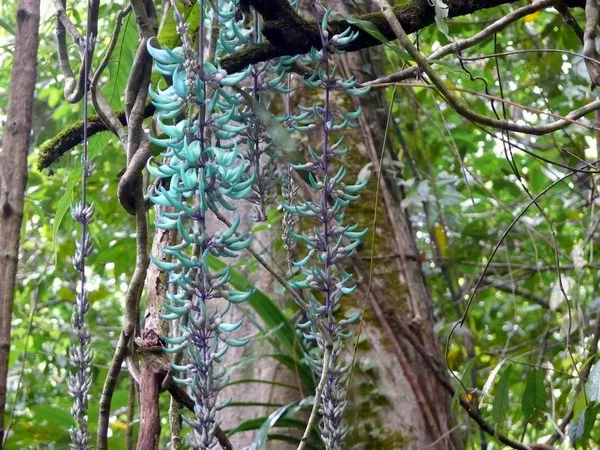
Scientific Name: Strongylodon macrobotrys
Family: Fabaceae
Habitat: Rainforests of the Philippines
Flower Cluster Length: Up to 3 feet
Conservation Status: Vulnerable
Description: The jade vine produces striking clusters of claw-shaped flowers that range in color from turquoise to jade green. The flowers are adapted for bat pollination, with their vivid colors and nectar attracting nocturnal pollinators.
Ecological Role: The jade vine’s specialized pollination mechanism ensures successful reproduction and contributes to the biodiversity of its rainforest habitat.
Conservation Efforts: Deforestation and habitat loss threaten the jade vine. Conservation strategies include protecting its natural habitat, cultivating the plant in botanical gardens, and raising awareness about its ecological importance.
5. Dracula simia: The Monkey Orchid
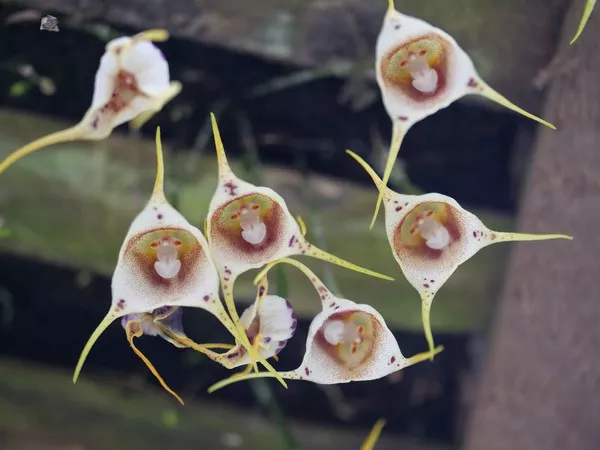
Scientific Name: Dracula simia
Family: Orchidaceae
Habitat: Cloud forests of Ecuador and Peru
Flower Shape: Resembles a monkey’s face
Conservation Status: Vulnerable
Description: The monkey orchid produces flowers that bear a striking resemblance to a monkey’s face, with intricate patterns and a unique floral structure. The flowers emit a scent similar to ripe oranges, attracting fruit flies for pollination.
Ecological Role: Growing in the humid understory of cloud forests, Dracula simia plays a role in maintaining the biodiversity of these unique ecosystems.
Conservation Efforts: Habitat loss and climate change pose significant threats. Conservation measures focus on habitat preservation, cultivation in botanical gardens, and public education to protect this rare orchid.
6. Hoya carnosa: The Wax Plant
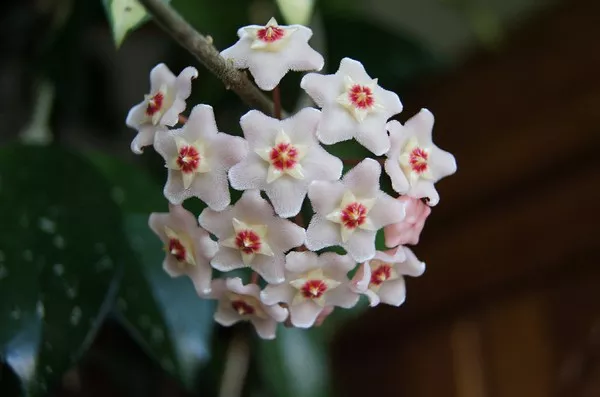
Scientific Name: Hoya carnosa
Family: Apocynaceae
Habitat: Asia and Australia
Flower Shape: Star-shaped
Conservation Status: Least Concern
Description: The wax plant produces clusters of small, star-shaped flowers with a glossy, wax-like texture. The flowers are highly fragrant, especially at night, attracting a variety of pollinators.
Ecological Role: Hoya carnosa’s flowers produce nectar that supports pollinators, contributing to the ecological health of its native habitats.
Conservation Efforts: While not currently endangered, habitat loss could impact local populations. Conservation efforts include habitat protection and promoting the plant’s cultivation in botanical gardens and home collections.
7. Tacca integrifolia: The White Batflower
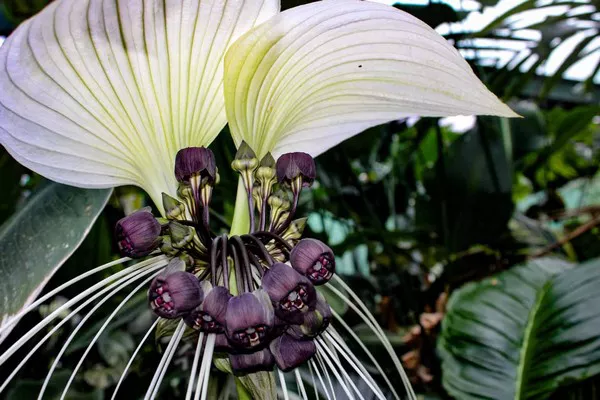
Scientific Name: Tacca integrifolia
Family: Dioscoreaceae
Habitat: Southeast Asia
Flower Shape: Bat-shaped bracts
Conservation Status: Least Concern
Description: The white batflower produces large, white bracts that resemble bat wings, with long, whisker-like appendages. The small, dark purple flowers are nestled within the bracts.
Ecological Role: This plant’s unique floral structure attracts specific pollinators, ensuring effective reproduction in its tropical forest habitat.
Conservation Efforts: Conservation efforts focus on habitat preservation and promoting awareness about the ecological role of this unique plant.
8. Victoria amazonica: The Giant Water Lily
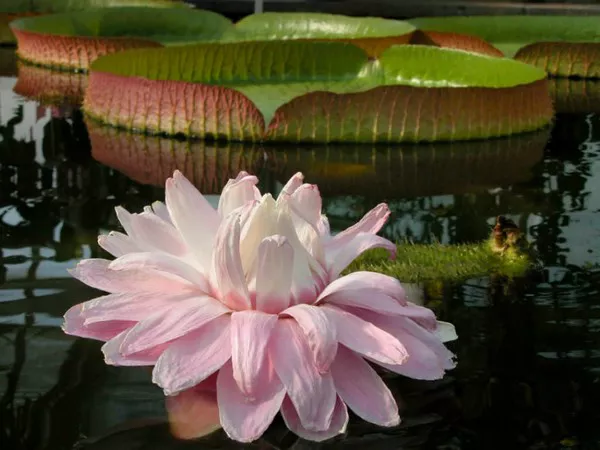
Scientific Name: Victoria amazonica
Family: Nymphaeaceae
Habitat: Amazon Basin
Leaf Diameter: Up to 10 feet
Conservation Status: Least Concern
Description: The giant water lily produces enormous floating leaves that can support significant weight. Its large, fragrant flowers open white at night and turn pink by the following day, facilitating pollination by beetles.
Ecological Role: The giant water lily provides habitat and shelter for various aquatic organisms and plays a vital role in the ecological dynamics of its wetland habitat.
Conservation Efforts: Protecting the Amazon Basin’s wetland habitats is crucial for the conservation of Victoria amazonica. Efforts include habitat restoration and sustainable management practices.
9. Euphorbia obesa: The Baseball Plant
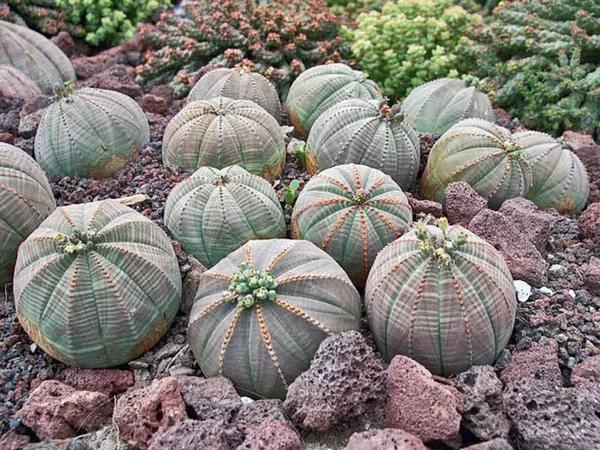
Scientific Name: Euphorbia obesa
Family: Euphorbiaceae
Habitat: Arid regions of South Africa
Shape: Spherical, resembling a baseball
Conservation Status: Vulnerable
Description: Euphorbia obesa has a distinctive round shape with symmetrical ridges. It is green with lighter stripes and can store water to survive prolonged droughts.
Ecological Role: This plant’s ability to store water makes it a critical species in its arid environment, supporting desert biodiversity.
Conservation Efforts: Over-collection and habitat loss threaten Euphorbia obesa. Conservation measures include habitat protection, regulation of plant collection, and cultivation in botanical gardens.
10. Ceropegia woodii: The String of Hearts
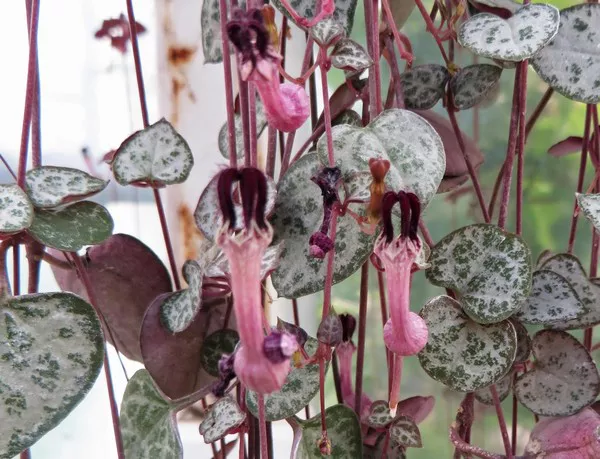
Scientific Name: Ceropegia woodii
Family: Apocynaceae
Habitat: South Africa, Swaziland, Zimbabwe
Leaf Shape: Heart-shaped
Conservation Status: Least Concern
Description: The string of hearts produces small, heart-shaped leaves on slender vines, creating a cascading effect. Its tubular flowers have a distinctive cage-like structure.
Ecological Role: Ceropegia woodii forms extensive ground cover in its native habitat, helping to stabilize soil and prevent erosion. Its flowers attract specific pollinators that navigate their intricate structure.
Conservation Efforts: While not currently endangered, promoting its cultivation and protecting its natural habitat are key to ensuring its continued survival.
See Also: Top 10 Rare Endangered Plants in 2024
Conclusion
The world’s most special flowers offer a glimpse into the incredible diversity and complexity of plant life. Each of these flowers, with their unique adaptations and ecological roles, highlights the intricate relationships that sustain ecosystems. Protecting these remarkable species is not just about preserving their beauty; it is also about maintaining the delicate balance of nature that they support.
You Might Be Interested In:










![10 Most Richest Cities in the United States [Revealed!]](https://www.validdownloads.com/wp-content/uploads/2023/12/Manjula-Pothos.webp)
















